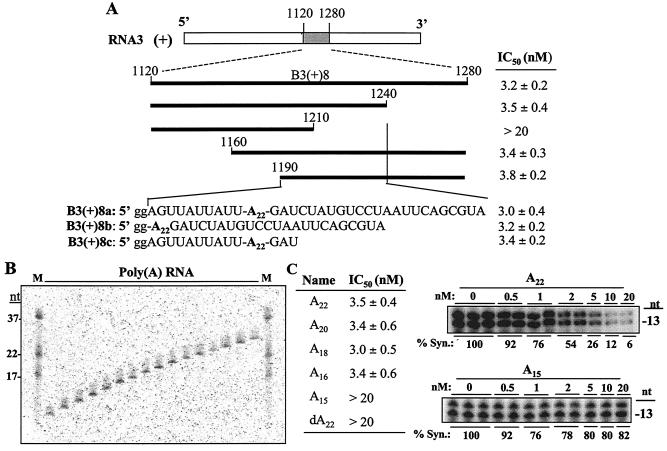FIG. 6.
The poly(A) sequence in the ICR can bind the BMV replicase. (A) Mapped sequences in B3(+)8 that contained at least one replicase-binding sequence. The IC50s of RNAs tested in template competition assays are summarized to the right of the bars that denote the portion of the RNA derived from B3(+)8. The initial mapping led to the identification of the sequence between nt 1190 and 1240 as the one encoding a replicase-binding sequence. RNAs B3(+)8a, B3(+)8b, and B3(+)8c were made to further address the responsible sequence. In the sequences shown, lowercase g's represents nucleotides that were added to the BMV sequence (in uppercase letters) to allow transcription by the T7 RNA polymerase. (B) Preparation of poly(A) molecules of various lengths for use in template competition assays. The gel contains the purified RNAs separated in a 20% denaturing polyacrylamide gel and stained with toluidine blue. The nucleotide lengths of several marker RNAs are shown to the left side of the gel. (C) Summary of the results from template competition assays for poly(A) molecules of different lengths or a chemically synthesized molecule of 22 deoxyadenylates. The two gel images are from template competition assays performed with competitors of 22 or 15 adenylates. % Syn., percent synthesis.

